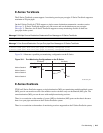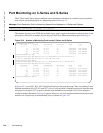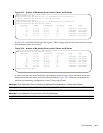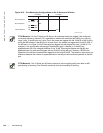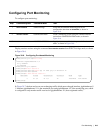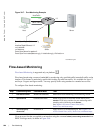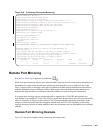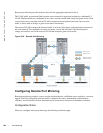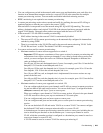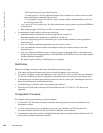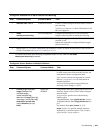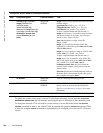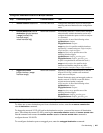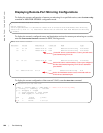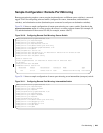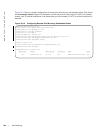Port Monitoring | 823
• You can configure any switch in the network with source ports and destination ports, and allow it to
function in an intermediate transport session for a reserved VLAN at the same time for multiple
remote-port mirroring sessions. You can enable and disable individual mirroring sessions.
• BPDU monitoring is not required to use remote port mirroring.
• A remote port mirroring session mirrors monitored traffic by prefixing the reserved VLAN tag to
monitored packets so that they are copied to the reserve VLAN.
Mirrored traffic is transported across the network using 802.1Q-in-802.1Q tunneling. The source
address, destination address and original VLAN ID of the mirrored packet are preserved with the
tagged VLAN header. Untagged source packets are tagged with the reserve VLAN ID.
• In the reserved L2 VLAN used for remote port mirroring:
• MAC address learning in the reserved VLAN is automatically disabled.
• The reserved VLAN for remote port mirroring can be automatically configured in intermediate
switches by using GVRP.
• There is no restriction on the VLAN IDs used for the reserved remote-mirroring VLAN. Valid
VLAN IDs are from 1 to 4094. The default VLAN ID is not supported.
• In a source session used for remote port mirroring:
• Maximum number of source sessions supported on a switch: 4
Important: FTOS supports a maximum of four source sessions for remote port mirroring and
a maximum of two source sessions per datapath. To use a third or fourth source session on a
switch, you must configure the session on a different datapath. Datapaths on different line
cards are defined as follows:
On a 50-port 1G line card, the datapath size is 5 ports; for example, ports 1/0 to 1/4 are the first
datapath; 1/5-1/9 are the second datapath, and so on.
On a 90-port 1G line card, the datapath size is 10 ports; for example, ports 1/0 to 1/9 are the
first datapath; 1/10-1/19 are the second datapath, and so on.
On a 10-port 10G line card, no datapath size is implemented; four source sessions are sup-
ported on the line card.
On a 40-port 10G line card, the datapath size is 4 ports; for example, ports 1/0-1/3 are the first
datapath; 1/4-1/7 are the second datapath, and so on.
• Maximum number of source ports supported on a switch: 128
You can configure physical ports, port-channels, and VLANs as sources in remote port mirror-
ing and use them in the same source session. You can use both Layer 2 (configured with the
switchport command) and Layer 3 ports as source ports.
When you configure a port channel or VLAN in a source session, all ports in the port channel
or VLAN are used as source ports, up to a maximum of 128 source ports.
You can configure trunk ports and access ports as source ports.
You can configure trunk ports and non-trunk ports as source ports in a remote-port mirroring
session.
You can use the default VLAN and native VLANs as a source VLAN. You cannot configure
the dedicated VLAN used to transport mirrored traffic as a source VLAN.
A destination port for remote port mirroring cannot be used as a source port, including the ses-
sion in which the port functions as the destination port. A source port channel or source
VLAN, which has a member port that is configured as a destination port, cannot be used as a
source port channel or source VLAN.
A VLAN cannot be used as a source VLAN for remote port mirroring if:



